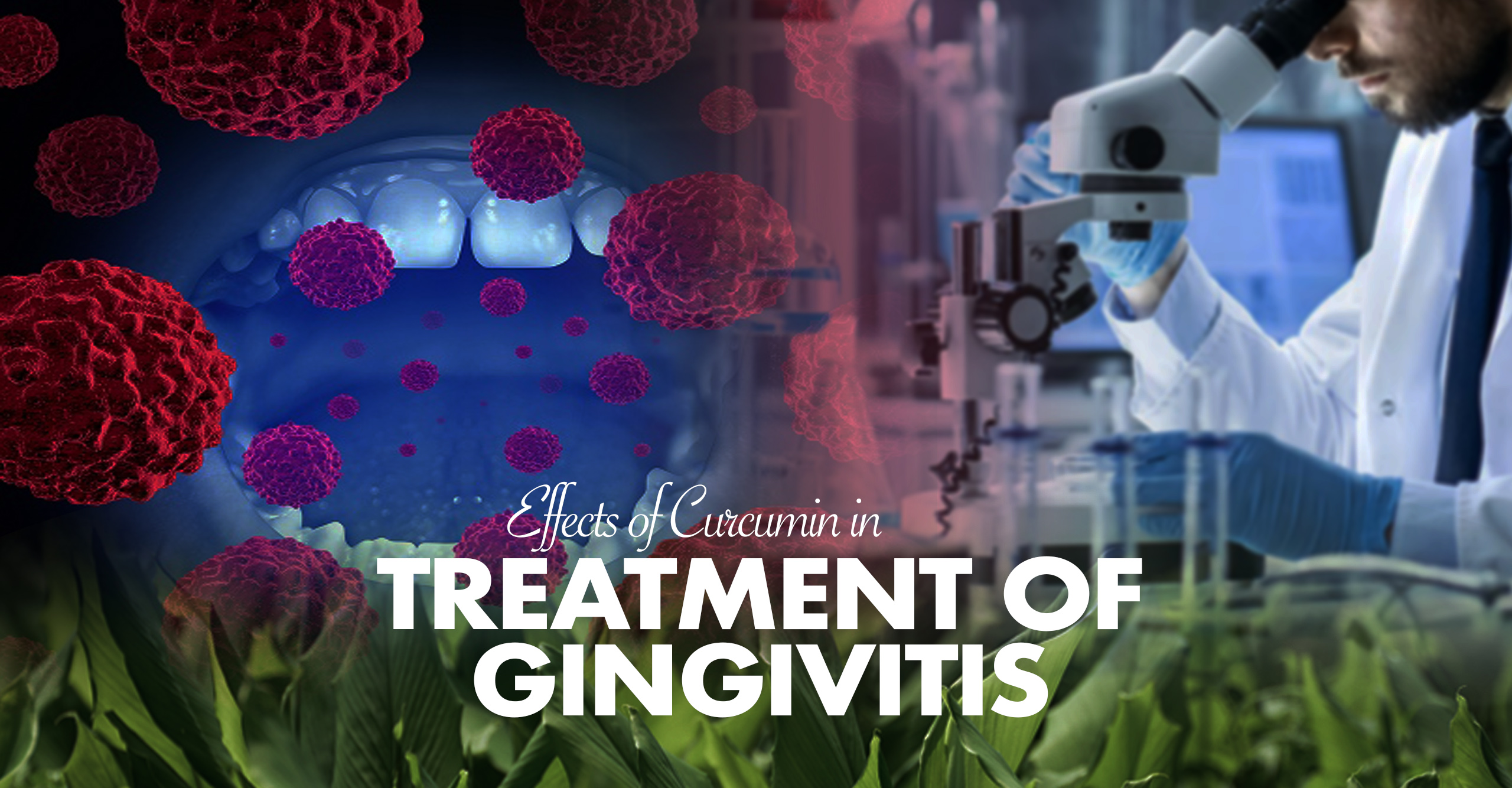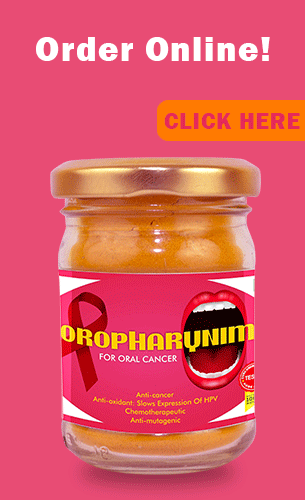The Effects of Curcumin in the Treatment of Gingivitis: A Systematic Review of Clinical Trials

The Effects of Curcumin in the Treatment of Gingivitis: A Systematic Review of Clinical Trials
Abstract
Background: Various modalities of treatments are available for gingival disease, but there are adverse effects of these conventional compounds. This led to the search of natural products which are highly beneficial and biocompatible. Turmeric is one such novel product obtained from plants, known for its varied medicinal value. In dentistry, it plays a role treating gingival and periodontal disease.
Aim: To evaluate the clinical efficacy of oral curcuma gel in gingivitis and to assess any adverse effects of the gel.
Materials and Methods: This pilot study comprises of 10 individuals with severe gingivitis. They were made to apply oral curcuma gel for a period of 21 days. The papillary bleeding index (PBI) were assessed before and after along with visual analogue scale. The obtained data was statistically analyzed.
Results: The data was analyzed with Pearson Spearman’s correlation coefficient and paired ‘t’ test. The results were statistically significant with p<0.001.
Conclusion: The gel containing curcuma longa extract was efficient in treating gingivitis by reducing its inflammatory components.
Introduction
Gingivitis is a form of periodontal disease that is prevalent in most children and adult populations. It usually precedes periodontitis. Periodontitis is inflammation and infection that destroys the tissues that support the teeth, including the gingiva, the periodontal ligament, and alveolar bone. It has been shown to be reversible Loe etal , although progression is not predictable, the prevention of gingivitis in the individual population is still the first step towards preventing periodontitis Burt etal.
Bacterial plaque is the primary aetiological agent in gingivitis. Mechanical plaque control, like scaling and root planning, is the first recommended step in the management of gingivitis and periodontitis and is an indispensable phase of periodontal therapy. Many chemical agents have been tested as adjuncts to mechanical methods which can reduce plaque-associated gingivitis. Chlorhexidine, Triclosan, Povidone iodine and various phenolic compounds have been used successfully as anti-plaque agents. However, side-effects such as allergy, discolouration of teeth and unpleasant taste can occur when these chemicals are used for an extended period of time.
Herbal medicines have been used for thousands of years in developing countries and more than 80% of population relies on their use for health care needs. Turmeric, neem, aloe vera, clove, cinnamon are among the common herbal products used in dentistry. Among this, turmeric has been used traditionally as a remedy for skin, stomach, liver ailments etc. Since turmeric has antimicrobial, antioxidant, astringent and other useful properties, It is useful in dentistry also.
Curcuma longa is a member of ginger family, is indigenous to Southeast Asia and as long been of about 2,500 cultivated and used in India. Turmeric (haldi), a rhizome of Curcuma longa, is a flavourful yellow-orange spice. It’s a plant is three feet in height and has lance-shaped leaves and spikes of yellow flowers that grow in a fleshy rhizome or in underground stem. An orange pulp contained inside the rhizome constitutes the source of turmeric medicinal powder. Components of tumeric are named curcuminoids, which include mainly curcumin ( diferuloyl methane), demethoxycurcumin, and bisdemethoxycurcumin. Curcumin (diferuloylmethane) is a polyphenol derived from Curcuma longa plant, commonly known as turmeric. The active constituents of turmeric are the flavonoid curcumin (diferuloylmethane) and various volatile oils including tumerone, atlantone, and zingiberone. Other constituents include sugars, proteins, and resins. The best-researched active constituent is curcumin, which comprises 0.3-5.4% of raw turmeric- Curcuma longa is also used externally for inflammation of oral mucosa. Curcumin (active constituent of turmeric) has been used for thousands of years as a dye, flavouring, and medicinal herb. To overcome the adverse effects caused by the chemical agents, Curcumin can be employed in the management of gingivitis.
Aims and Objectives
To evaluate the clinical efficacy of oral curcuma gel in gingivitis and to assess any adverse effects of the gel.
Materials and Methods
Patients for this study were selected from the outpatient Hi Wellness Pvt Ltd Clients , Okhla, Delhi, India. Verbal and written informed consent was obtained from every participants.
This pilot study comprises of 10 patients who are randomly selected by the following selection criteria.
Inclusion criteria
- Patients of age between 16-55 y.
- Minimum of 20 teeth should be present in the dentition.
- Patients with severe gingivitis (red and inflamed gingiva) with the papillary bleeding index score of 3.
- Patient who had not received any periodontal therapy for past six months.
- Probing depth ≤ 3mm.
Exclusion criteria
- Subjects taking antibiotics or any other drugs within last three months.
- Pregnant women and lactating mothers.
- Patients with any systemic disease and medically compromised.
- Smokers.
- Patient with known hypersensitivity to curcuma.
Study material
Clinical examination will be done using mouth mirror, explorer, UNC-15 probe and tweezer.
Study Method
Patients were instructed to drink Oropharynim Product.
Twice a day for three weeks, drink this by keeping each sip in your mouth for 20 to 25 sec.
Clinical parameters are assessed at different time intervals (0, 7, 14, 21days) and recorded in a special proforma sheet.
The findings are recorded along with visual analogue scale. After evaluating the findings in 21 d, they were made to undergo complete ultrasonic scaling.
Clinical Parameters
Papillary Bleeding Index (Muehlemann H.R 1977)
Gingival Index (Loe and Silness 1961)
Visual analogue scale
Ethics
HI WELLNESS PVT LTD, OKHLA, NEW DELHI INDIA
Statistical Analysis
The statistical evaluation was performed using Pearson and Spearman’s correlation coefficient and paired t-test when appropriate. The software used for all statistical evaluation was SPSS 17statistical package program.
Results
All 10 patients were able to complete the clinical trial. The experimental gel had a good patient’s acceptance and did not show adverse reactions such as ulceration or allergic reactions.
At baseline, all individuals had significantly higher bleeding scores . On day 7 there was reduction in the bleeding on probing. On day 21 there was significant reduction in bleeding on probing with respect to PBI score.
By using visual analogue scale, subjective grading ranging from 0 to 10 depending on the patient compliance was assessed. The confidence limit was good. Clinically there was significant change in the colour of the gingiva from reddish pink to pale pink.
The mean score calculated by Pearson Correlation Ratio for preoperative (2.1910) and postoperative readings (1.2550) shown in [Table/Fig-1].
The visual analogue scale calculated for all 10 patients corresponding to their grading. It reveals good patient compliance, shown in
[Table/Fig-1]:
Visual analogue score

All the individuals in this current study exhibited appreciable anti-gingivitis activity determined from the clinical parametric analysis as shown in the [Table/Fig-3].
[Table/Fig-2]:
Papillary bleeding index

It is evident that on application of oral curcuma gel thrice daily for a period of three weeks shows a tremendous decrease in inflammation and colour of the gingiva, which in future will influence the treatment by the decreasing the bleeding on probing leading to easy handling of tissues, thereby enabling us to arrest any further disease progression. This study is unique in its way that anti-gingivitis properties was evaluated from patients with severe plaque and gingivitis without any mechanical debridement.
Discussion
Plaque is the main agent responsible for the breakdown of periodontal tissues leading to periodontal disease.
The removal of this plaque regularly is of paramount importance in the prevention of periodontal disease. The inability of the adult population to perform adequate mechanical tooth cleaning has stimulated the search for chemotherapeutic agents added to dentifrices to improve plaque control and prevent gingivitis.
So various means have been established and search is going on to reduce the bacterial load.
Herbal products are one group of agents which has been used extensively in reducing the bacterial population.
Phyto therapeutic products have been investigated with these purposes and have shown satisfactory results.
This made us to evaluate the efficacy of curcuma on gingival health and its use in the treatment of gingivitis.
In this study the data analysed from the pre-interventional and post-interventional papillary bleeding index showed a statistically significant p-value with significant anti-gingivitis properties of p.<0.001.
Conclusion
Within the limits of this clinical study.
It can be concluded that the gel containing curcuma longa extract was efficient in treating gingivitis by reducing its inflammatory components.
This study is unique in the patient selection by taking into account of only severe gingivitis cases and evaluating the anti-gingivitis property without any other gel or mechanical debridement.
At the end of the study period the subjects showed change in the colour of the gingiva with the good patient acceptance on employing visual analogue scale.
It is also statistically significant.
Curcuma oral gel has anti-inflammatory effects. Randomised controlled trial with and without mechanical therapy will conclude that curcuma can be an effective adjunct to mechanical periodontal therapy.


